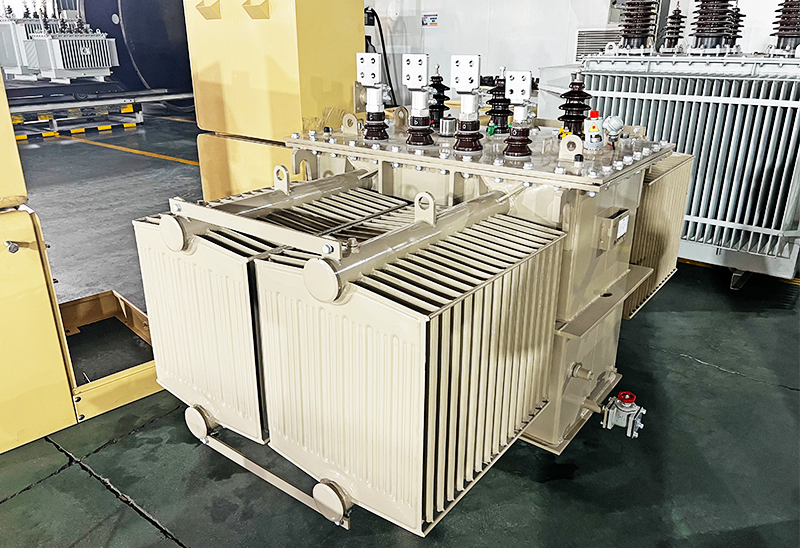- E-mail: admin@yaweitransformer.cn
- Tel: +86-18862719076
Oil-immersed transformers can be divided into three-phase transformers and single-phase transformers. In the three-phase power system, three-phase transformers are generally used, and when the capacity is too large and limited by transportation conditions, three single-phase transformers can also be used in the three-phase power system to form a transformer group.
Winding distinction
Can be divided into two winding transformer and three winding transformer. The usual transformer is a double-winding transformer, that is, there are two windings on the iron core, one is the primary winding and one is the secondary winding. The three-winding transformer is a transformer with a larger capacity (above 5600 kVA), which is used to connect three different voltage transmission lines. In special cases, there are also Satons transformers that apply more windings.
Structural classification
It can be divided into iron core transformer and iron shell transformer. If the winding is wrapped around the core, it is a core transformer; If the core is wrapped around the winding, it is an iron shell transformer. The two are only slightly different in structure, and there is no essential difference in principle. Power transformers are of core type.
The transformer is mainly composed of iron core, winding, oil tank, oil pillow, insulation bushing, tap changer and gas relay.
1. Iron core
The core is the magnetic part of the transformer. During operation, hysteresis loss and eddy current loss are generated and heat is generated. In order to reduce heating loss and reduce volume and weight, the core is made of cold-rolled grain-oriented silicon steel with a high permeability of less than 0.35mm. According to the arrangement of the winding in the iron core, there are iron core type and iron shell type.
In a large-capacity transformer, in order to make the heat emitted by the loss of the iron core can be fully taken away by the insulating oil during circulation to achieve a good cooling effect, the cooling oil duct is often provided in the iron core.
2. Winding
The winding and the iron core are the core components of the transformer. Due to the resistance of the winding itself or the contact resistance at the junction, Joule’s law shows that heat is to be generated. Therefore, the winding cannot pass a current higher than the rated current for a long time. In addition, when the current is short-circuited, a large electromagnetic force will be generated in the winding and damage the transformer. The basic winding has two kinds: concentric type and overlapping type.
The main faults of transformer winding are short circuit between turns and short circuit to the shell. Interturn short circuit is mainly due to insulation aging, or due to the overload of the transformer and through the short circuit insulation caused by mechanical damage. When the oil level in the transformer drops and the winding is exposed to the oil level, the turn to turn short circuit can also occur; In addition, when passing through a short circuit, the winding is deformed due to the action of overcurrent, so that the insulation is subjected to mechanical damage, and inter-turn short circuit will also be generated. In the case of interturn short circuit, the current in the short circuit winding may exceed the rated value, but the entire winding current may not exceed the rated value. In this case, the gas protection action, the situation is serious, the differential protection device will also act. The cause of short circuit to the housing is also due to aging insulation or oil moisture, oil level drop, or due to lightning and operating overvoltage. In addition, when crossing short circuit occurs, the winding is deformed due to overcurrent, and the phenomenon of short circuit to the shell will also occur. When the shell is short-circuited, it is generally gas protection device action and grounding protection action.
Step 3: Fuel tank
The body (winding and core) of the oil-immersed transformer is packed in a tank filled with transformer oil, and the tank is welded with steel plates. The tank of the medium and small transformer is composed of a box shell and a box cover. The transformer body is placed in the box shell, and the box cover can be opened to lift out the body for maintenance.
Insulation cooling classification
Can be divided into oil immersed transformer and dry transformer. To enhance insulation and cooling conditions, the transformer’s core and windings are immersed in a tank filled with transformer oil. In special cases, such as street lamps and mine lighting, dry transformers are also used.
